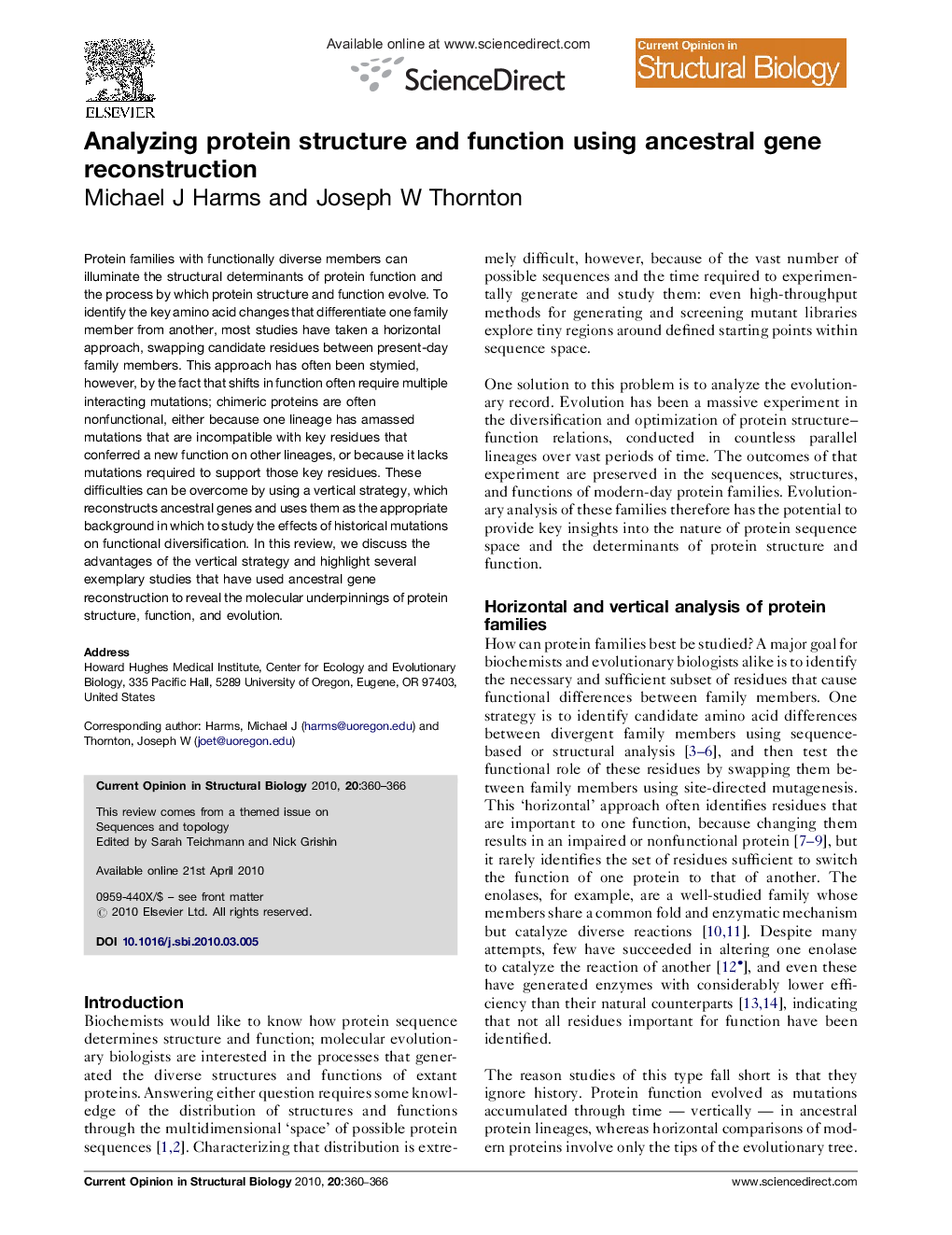| Article ID | Journal | Published Year | Pages | File Type |
|---|---|---|---|---|
| 1979695 | Current Opinion in Structural Biology | 2010 | 7 Pages |
Protein families with functionally diverse members can illuminate the structural determinants of protein function and the process by which protein structure and function evolve. To identify the key amino acid changes that differentiate one family member from another, most studies have taken a horizontal approach, swapping candidate residues between present-day family members. This approach has often been stymied, however, by the fact that shifts in function often require multiple interacting mutations; chimeric proteins are often nonfunctional, either because one lineage has amassed mutations that are incompatible with key residues that conferred a new function on other lineages, or because it lacks mutations required to support those key residues. These difficulties can be overcome by using a vertical strategy, which reconstructs ancestral genes and uses them as the appropriate background in which to study the effects of historical mutations on functional diversification. In this review, we discuss the advantages of the vertical strategy and highlight several exemplary studies that have used ancestral gene reconstruction to reveal the molecular underpinnings of protein structure, function, and evolution.
